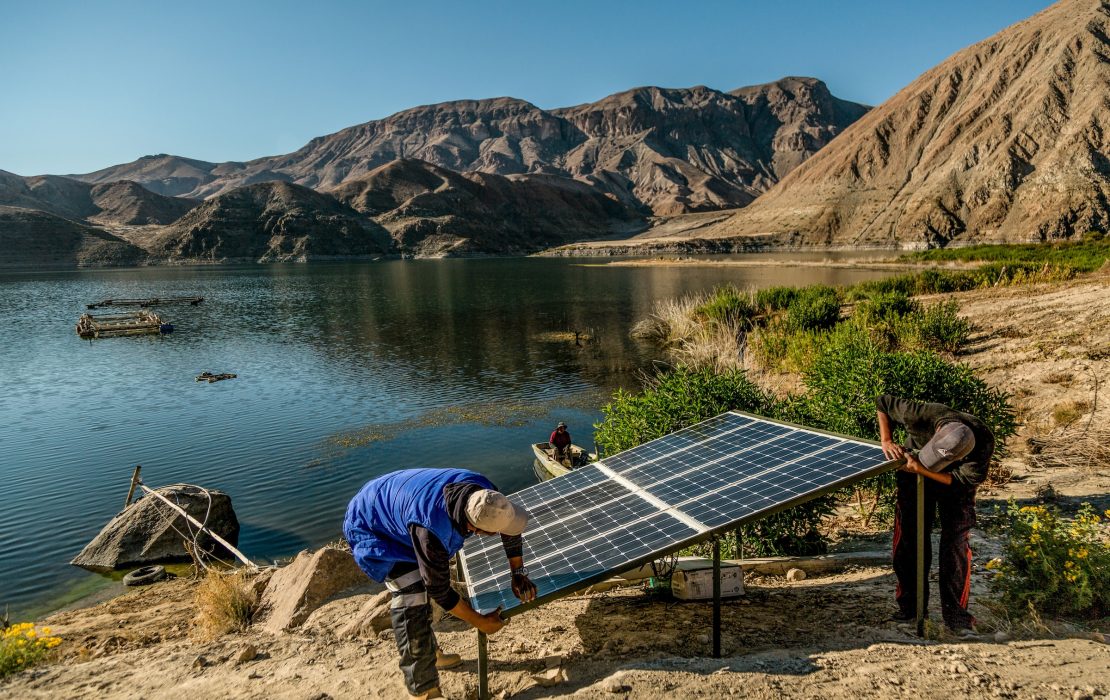
Photo: Ministry of Environment of Peru
When it comes to the commitments pledged by the countries in their Nationally Determined Contributions (NDCs), it’s clear that we still have a long way to go to meet the goal of limiting the global temperature to 1.5°C. This situation urges us to include all sectors in finding innovative solutions.
For almost a decade, we at UNDP have been exploring how to give more space to the private sector in climate action, most recently with the assistance of the NDC Support Programme and the Climate Promise. Governments in Latin America have promoted voluntary carbon footprint programmes as one such solution, funneling spontaneous, voluntary efforts from the public and private sectors to reduce greenhouse gas (GHG) emissions onto platforms where such actions can be quantified and recognized. There is much to learn from this experience.
Countries such as Chile, Peru and Panama have tangible experiences and achievements to share promoting the quantification, monitoring and management of GHG emissions. These carbon footprint initiatives provide online emissions calculators, together with a system of public recognition by means of approval awards for organizations that report, reduce or ideally make their GHG emissions carbon-neutral.
It’s worth taking stock of how such interventions have managed to reinforce resilience, especially in the face of an unexpected crisis as the COVID-19 pandemic. Below are some highlights from our work to reduce carbon footprint of the private sector in the region.
- The pioneering programme in the region is Huella Chile (Chile Footprint), which has received continued support from UNDP since 2012 and was formally established in 2014. To date, it has registered 1,468 organizations and has awarded 904 seals of recognition, including seals for GHG quantification, reduction, neutrality and excellence. In addition, it has trained more than 3,000 people in the effects of climate change and in GHG management. Newer innovations include a water footprint for municipalities (community recognition system) and a gender equality seal.
- Reduce Tu Huella Corporativo (Reduce Your Corporate Footprint), the most recent initiative in the region, promoted by the Government of Panama since 2021, has reached 71 registered organizations. It establishes a standardized process to identify, calculate, report and verify information related to GHG within public, private and civil society organizations. It also includes a component to reduce the water footprint of organizations, seeking to improve the management of their water resources and link it to strategies for adaptation to climate change.
- Peru, as part of its 2030 NDC mitigation and inspired by the Huella Chile programme, launched Huella de Carbono Perú (Peru Carbon Footprint). It currently has 567 organizations registered and has issued 267 recognition stamps. Between 2018 and 2020, a total of 377,782 tonnes of carbon dioxide equivalent (CO2e) have been neutralized from participating companies on a voluntary basis. Considering Huella Peru platform only represents 2.2 percent of the reported emissions, we can see clearly the potential of this work for establishing a clear and concrete mechanism for climate neutrality.
“Huella de Carbono Perú” has also engaged civil society through advocacy campaigns with the aim to encourage organizations to commit to the neutralization of their emissions. With their slogan, “Dejemos una buena huella” (“Let’s leave a good footprint”), it creates awareness on the importance of reducing the carbon footprint.
Bringing in more countries in 2022
With UNDP support, these three pioneer countries are now sharing their experiences, knowledge and lessons learned with teams in Colombia, Ecuador and Paraguay, hoping that it allows the newcomers to reduce roll-out times, address concerns, and harness good results and innovative ideas. When we see that Peru is reaching higher rates of participation than Chile, we can see the benefits of sharing lessons learned, technical solutions and successful experiences. This knowledge sharing is what will allow governments to reach larger numbers of participants where platforms will start to struggle in the way beyond a several thousands.
Everything related to climate change is subject to “learning by doing” and is subject to a permanent process of improvement, but now it is key to add “acceleration” during this critical decade of action towards 2030.
For 2022, we aim to improve and strengthen the articulation of carbon footprinting with other tools, such as product footprints and circular economy, strengthening the relationship with water footprints, gender equality and renewable energy certificates, and with economic incentive schemes.
This year, we will also publish a guidebook that will compile the relevant guidelines and successful experiences to implement voluntary national carbon footprint programmes in Latin America and the Caribbean. This guide will be prepared for governments that wish to develop similar initiatives and will consolidate a detailed technical description of successful experiences on the ground. It will also serve as a guidance to identify support needs in the region, to provide further action steps within UNDP Climate Promise for private sector inclusion in the region and beyond.
We will continue with South-South exchanges, supporting the development of common standards in order to have regional accounting elements. This should also help to promote economies of scale by exploring mechanisms to reduce the costs associated with quantification and verification.
UNDP’s Climate Promise is the largest global initiative supporting NDCs today. With the launch of a new phase focused on implementation, we at UNDP will continue to support the roll-out of national carbon footprint programmes given the demonstrated high impact in catalyzing private-sector efforts to contribute to the NDCs.
Many countries are now pledging for 2050 carbon neutrality targets. In my view, voluntary national carbon footprint programmes, by means of considering both public and private voluntary GHG mitigation initiatives, will be in the frontline of this new challenge. They are also the best platforms to neatly bridge NDCs with bottom-up voluntary agendas. As UNDP, we’re looking forward to continue supporting this work.
***
If you found this piece useful, explore UNDP’s Guideline for the implementation of National Voluntary Carbon Footprint Programmes in Latin America and the online course based on this guideline.
This article was originally published here.


